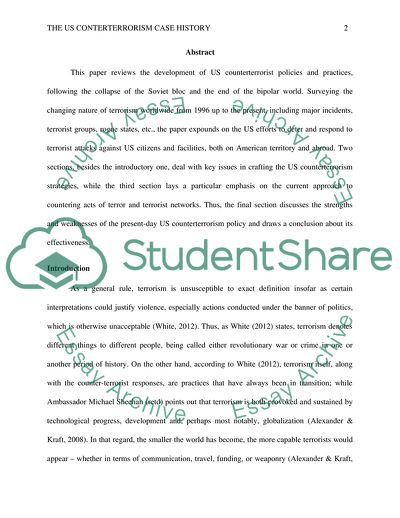Cite this document
(Historical Reference to U.S. Counter-terrorism Practices Coursework Example | Topics and Well Written Essays - 2250 words - 1, n.d.)
Historical Reference to U.S. Counter-terrorism Practices Coursework Example | Topics and Well Written Essays - 2250 words - 1. https://studentshare.org/military/1788853-historical-reference-to-us-counter-terrorism-practices-and-how-these-practices-have-been-developed
Historical Reference to U.S. Counter-terrorism Practices Coursework Example | Topics and Well Written Essays - 2250 words - 1. https://studentshare.org/military/1788853-historical-reference-to-us-counter-terrorism-practices-and-how-these-practices-have-been-developed
(Historical Reference to U.S. Counter-Terrorism Practices Coursework Example | Topics and Well Written Essays - 2250 Words - 1)
Historical Reference to U.S. Counter-Terrorism Practices Coursework Example | Topics and Well Written Essays - 2250 Words - 1. https://studentshare.org/military/1788853-historical-reference-to-us-counter-terrorism-practices-and-how-these-practices-have-been-developed.
Historical Reference to U.S. Counter-Terrorism Practices Coursework Example | Topics and Well Written Essays - 2250 Words - 1. https://studentshare.org/military/1788853-historical-reference-to-us-counter-terrorism-practices-and-how-these-practices-have-been-developed.
“Historical Reference to U.S. Counter-Terrorism Practices Coursework Example | Topics and Well Written Essays - 2250 Words - 1”. https://studentshare.org/military/1788853-historical-reference-to-us-counter-terrorism-practices-and-how-these-practices-have-been-developed.


